Travels with Dick and Karen
South Africa
Part 1
Cape Town |
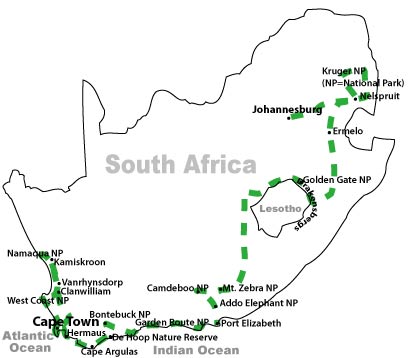 |
| Why did we go to South Africa? Karen's reason: To see weird flowers called Proteas and to see what we consider as "houseplants" in their native habitat. Dick's reason: To see South Africa. |
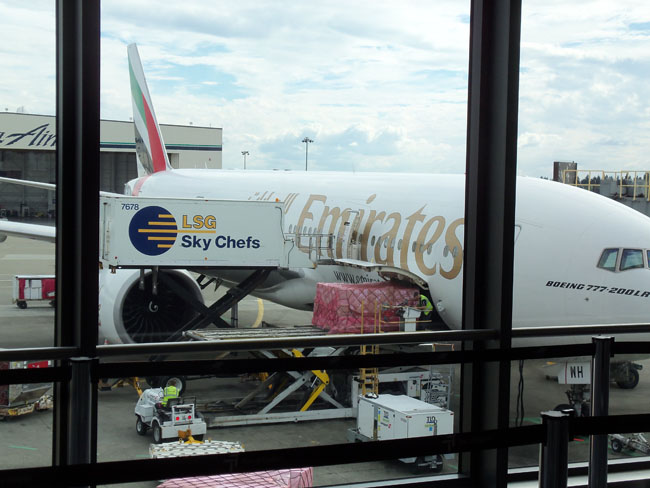 |
To minimize the number of hops in-between and to allow "open jaw", we flew Emirates to Dubai and then to Cape Town.
We departed Seattle at 6pm Aug 27th on a 14 hour flight, heading northeast.
The prevailing winds coupled with the geometry of Great Circles meant that going over Greenland is really the best route! They had these nice screens on the back of each seat showing where we were (or our choice of 200 movies and other entertainment). |
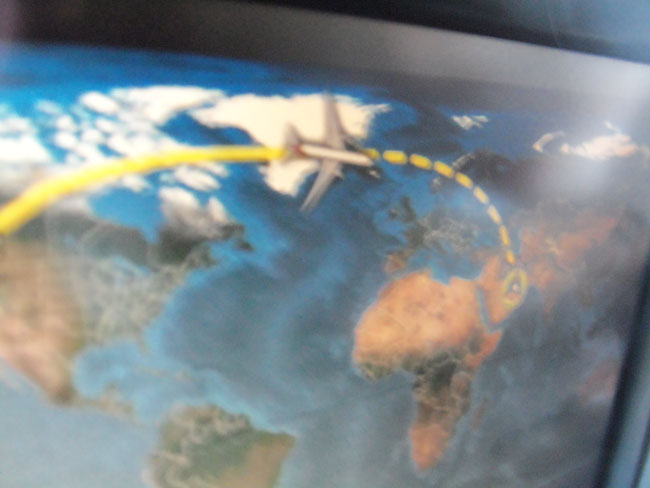 |
But looking out the window was much more interesting:
Greenland's mountains and glaciers catching the early morning's light. |
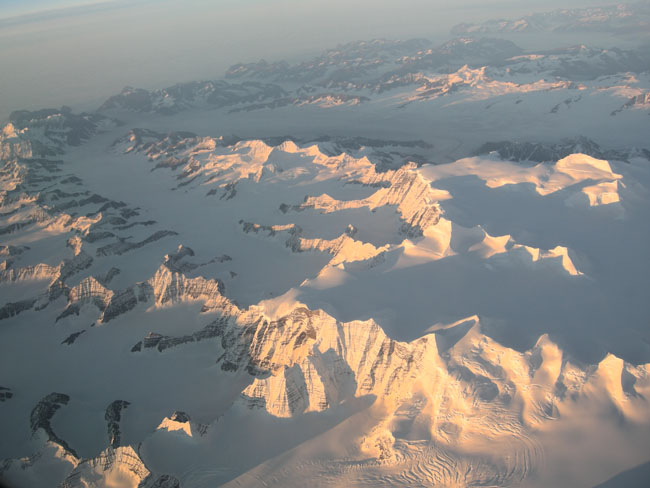 |
| We arrived in Dubai at 7pm the next calendar day. Then a 9 hour layover in the Dubai airport, leaving at 4am on the 29th. People in clothing from all over the world, not just western dress. The three-story three-terminal duty-free shops were busy all night. |
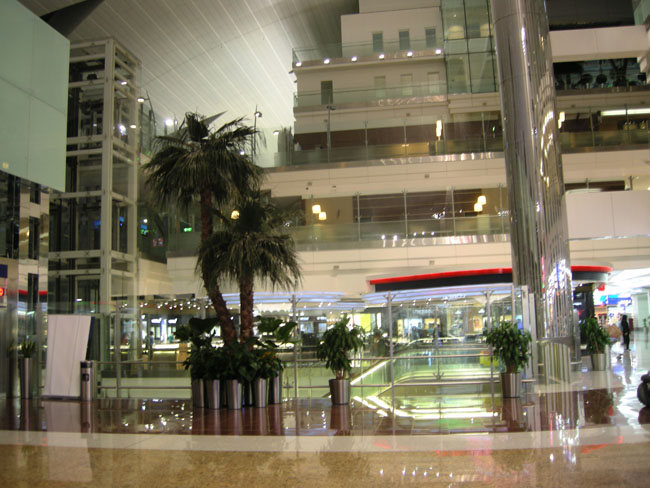 |
| At 4 in the morning, what we saw of Dubai were patterns of lights in the sand. |
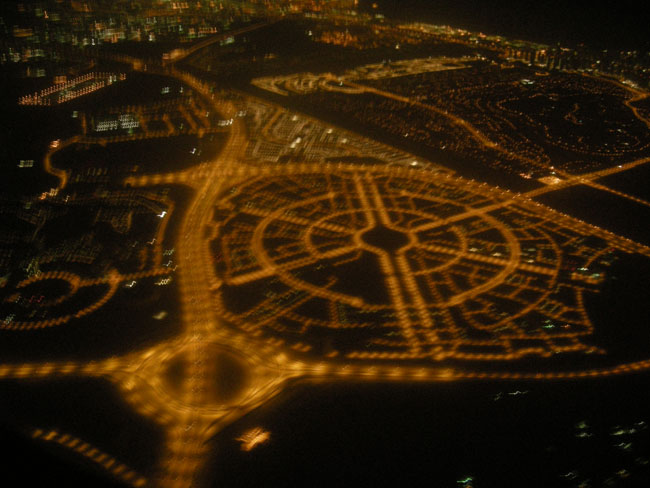 |
| Eight hours later, an hour before local "noon," the clouds parted to give us our first glimpse of South Africa and the snow on the mountains |
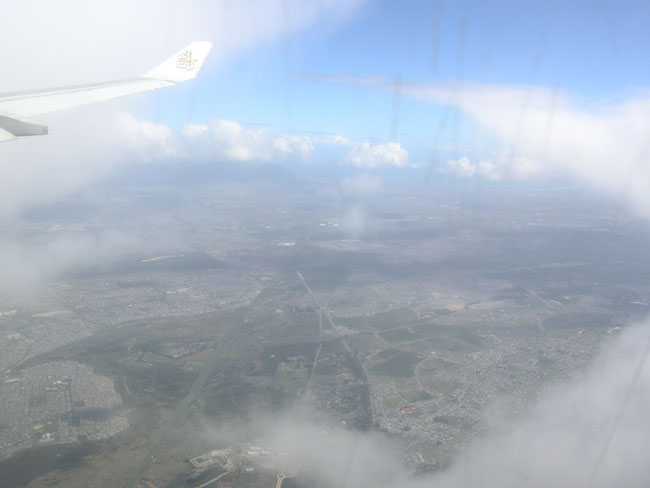 |
The south coast beaches |
 |
| Our first glimpse of Table Mountain, which we weren't to see clearly again for several days. |
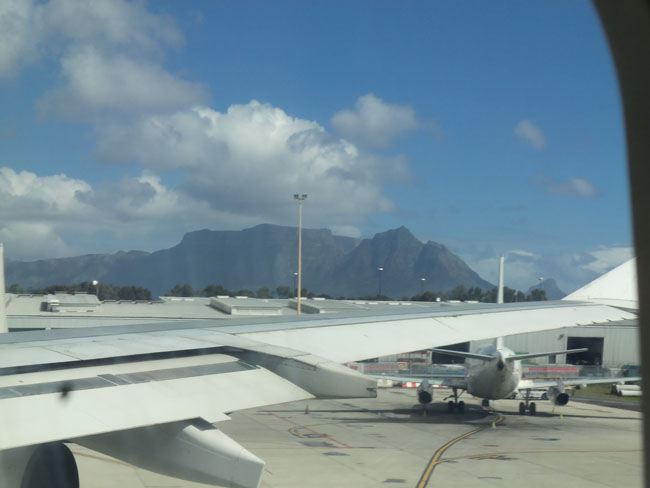 |
Our taxi driver made sure to point out a township on the way to where we were staying in downtown Cape Town. |
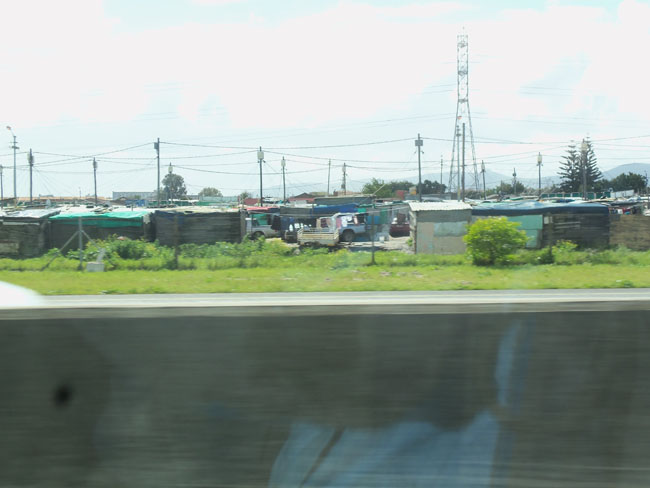 |
| Our host Faisal introducing us to the proteas and other plants of his garden |
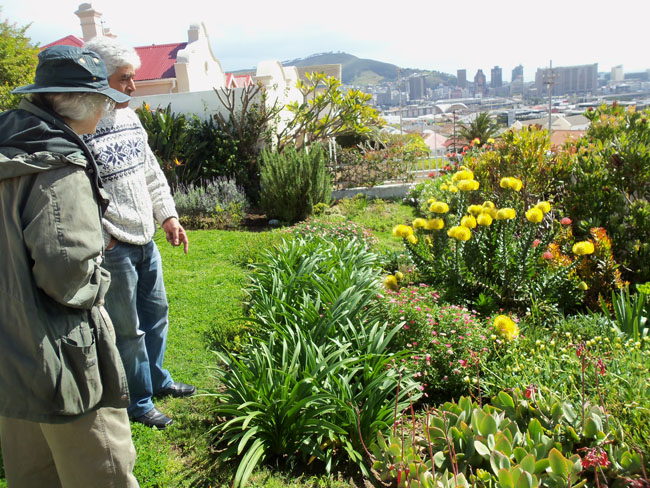 |
| His "pincushion" proteas were very impressive. |
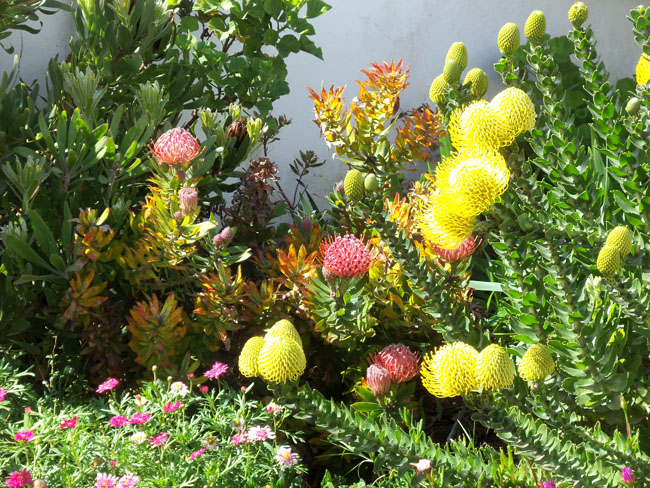 |
| Our "room" in Cape Town was a one-bedroom guest cottage beside Faisal's home, booked through www.airbnb.com . Here is Karen on the steps to it, with Table Mountain looming behind. |
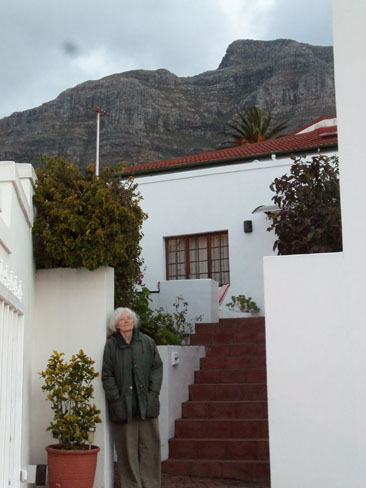 |
| The next morning, the VW Kombi campervan we had pre-arranged from www.lekkercamper.co.za was delivered to our door. This also shows the spectacular view we had of Cape Town Harbor. |
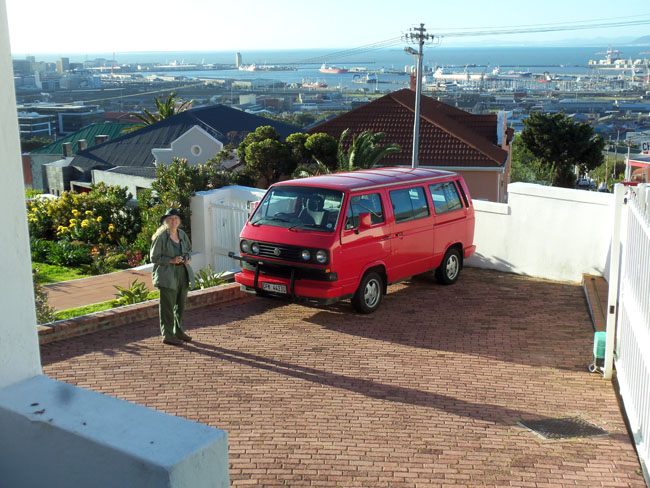 |
| We spent a couple of days outfitting the van for our intended camping. Mostly shopping at the harborside Victoria and Albert Waterfront shopping complex (the "V&A"). Signal Hill is in the background, with Table Mountain mostly enshrouded by its "tablecloth". |
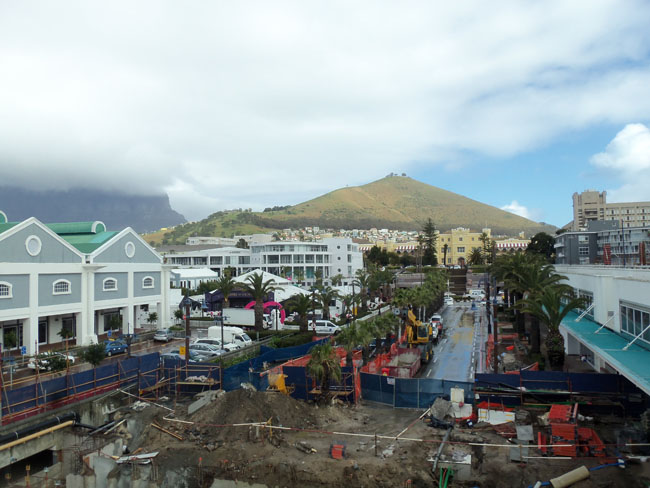 |
| One attraction of the V&A is the Two Oceans Aquarium, featuring displays from both the cold Atlantic and the warmer Indian Oceans. This tank lets children (and the occasional adult) "swim with Nemo". ( Western clownfish (anemonefish), Amphiprion ocellaris ) |
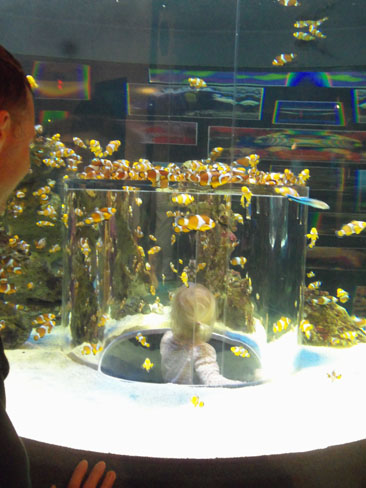 |
| These jellyfish look very much like ones we see at home in Seattle. (Moon jellyfish, Aurelia aurita) |
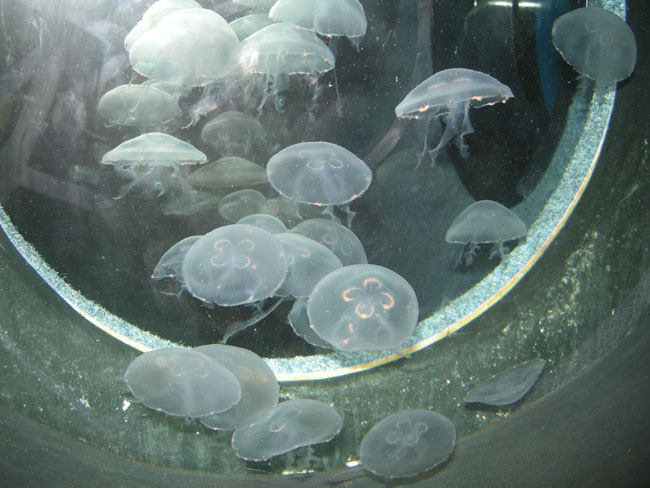 |
| As do the skates, rays and ratfish |
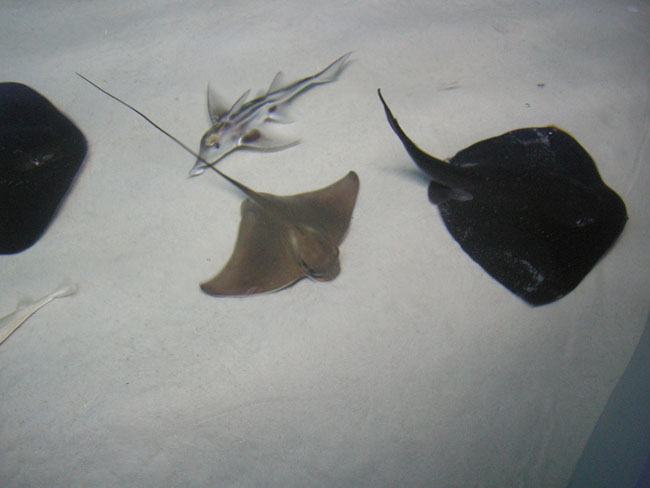 |
| But this Honeycomb moray eel (Gymnothorax favagineus), from the coast of KwaZulu-Natal, looks quite different. There's a Zebra eel (Gymnomuraena zebra) in the rock just above it. |
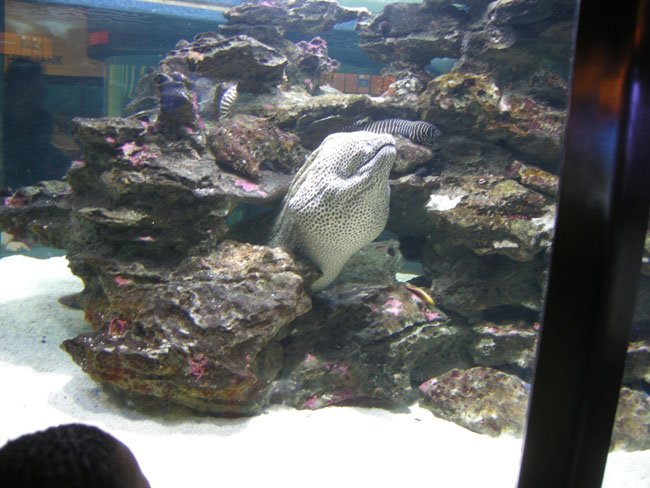 |
| And we have nothing like this Clown Triggerfish (Balistoides conspicillum) in Pacific Northwest waters! |
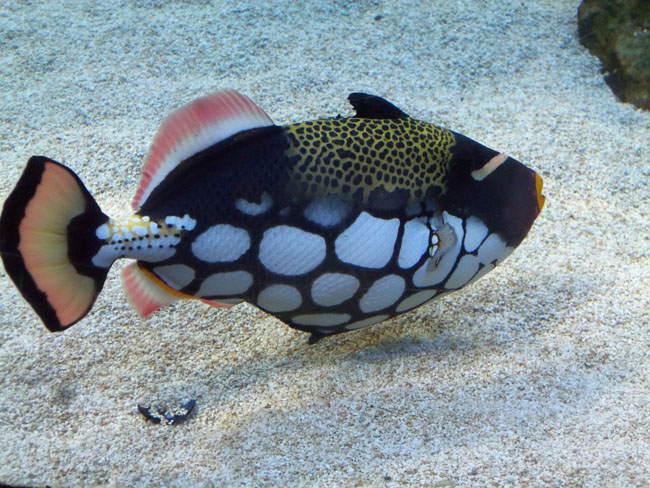 |
| And while they have kelp forests in the cool west coast waters, the kelp is slightly different as you will see later. |
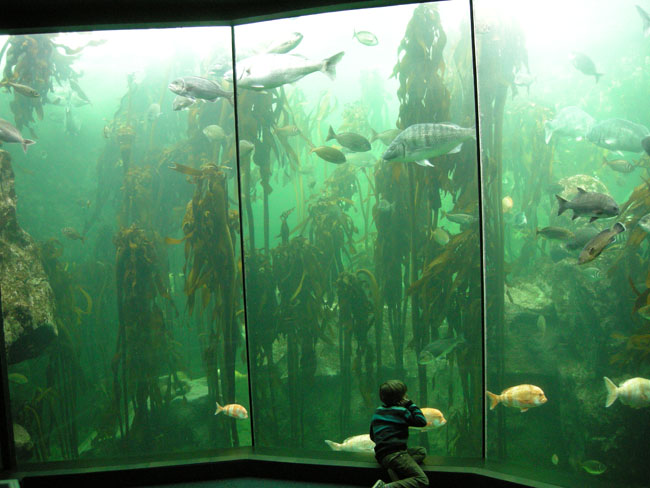 |
| And the penguins look puzzled as they always do. |
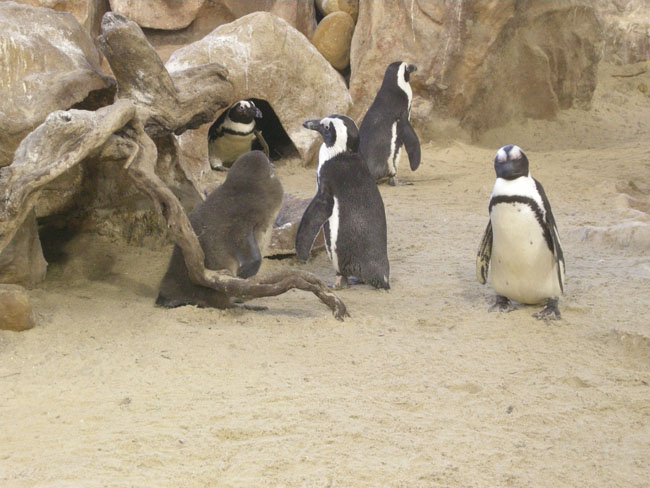 |
| The next day we drove out to the Cape of Good Hope. |
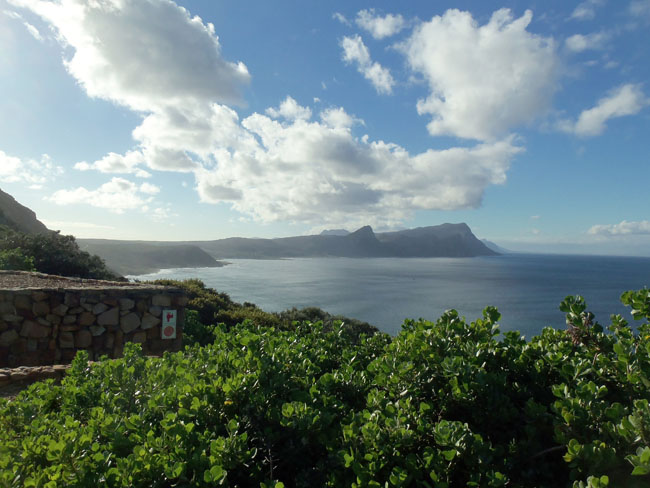 |
| And our first wild proteas |
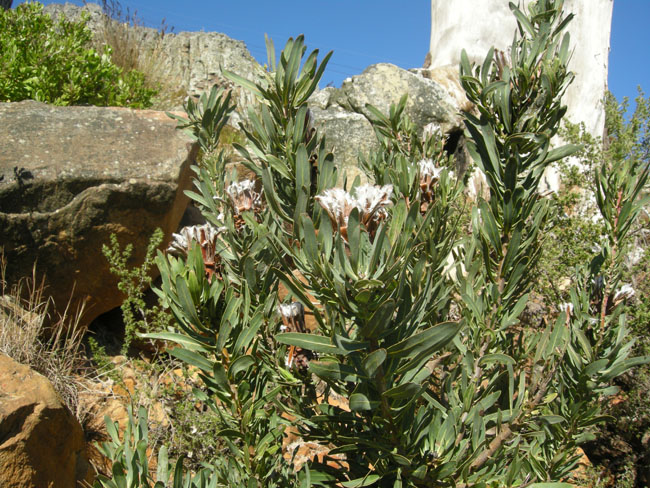 |
| Although this day was bright and usually sunny, there was a bitter wind blowing off the South Atlantic. |
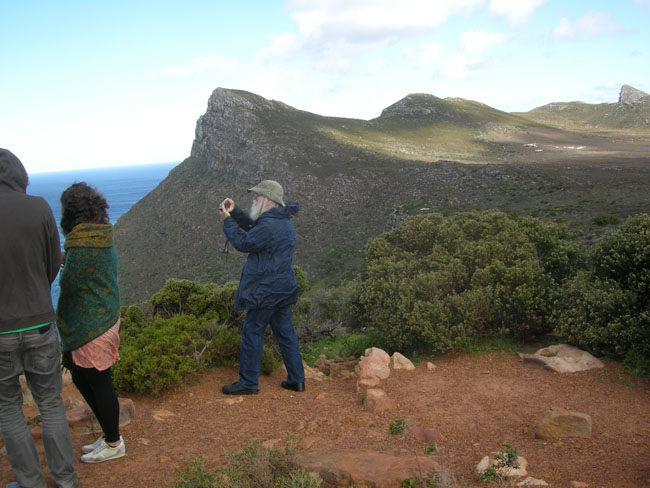 |
| Much of the landscape was low shrubby fynbos.
The original colonizing Dutch had been disappointed by the area's lack of good timber, and described the vegetation as fijn bosch (fine bush). Afrikaans bent that to "fynbos".
The white is a monument to one of the early explorers of the area. |
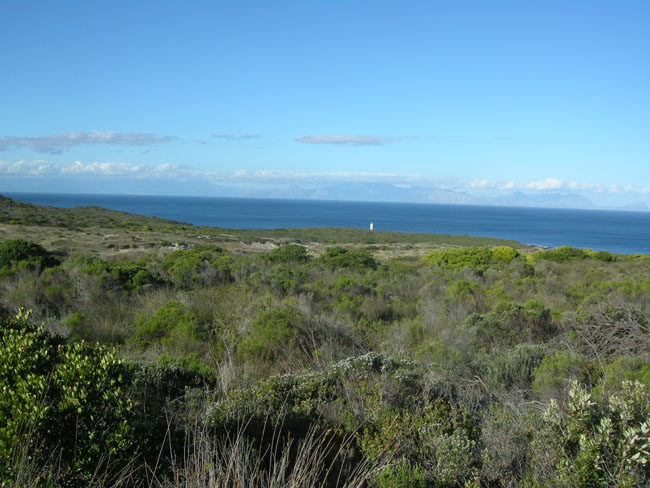 |
| We reached the Cape Point Lighthouse parking lot just after the final funicular tram had departed. We decided we couldn't make hike up and down and still make it back to town before dark so we left that for another trip. Cape Point is the southernmost point of this spit of land, but not the southernmost tip of Africa. |
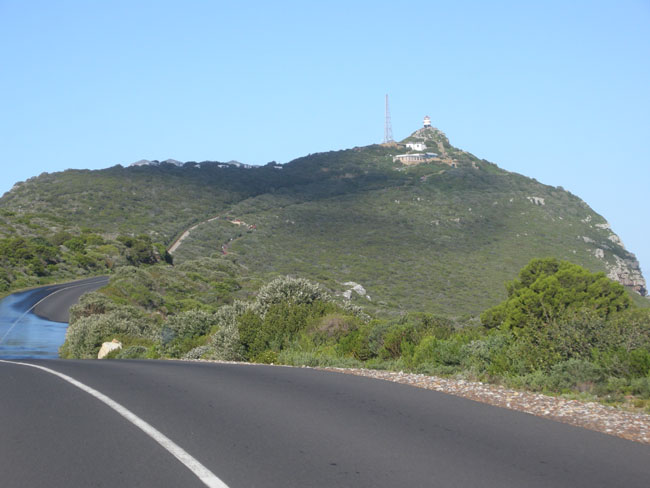 |
| The Cape of Good Hope is actually a little bit north and west of Cape Point... it's a short spur of rock pointing out into the Atlantic with its own parking lot. |
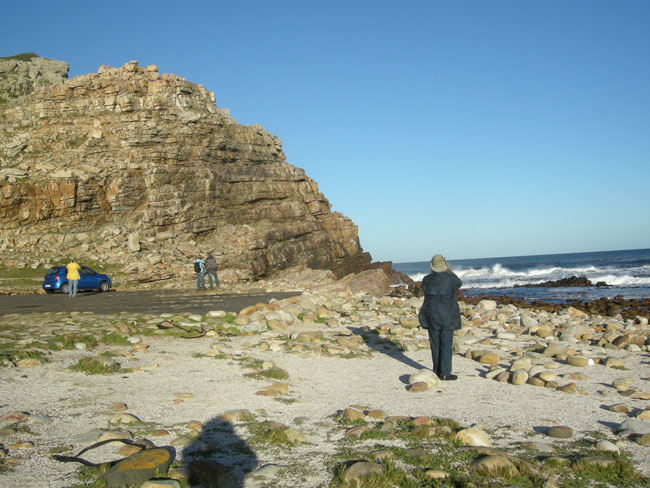 |
| There were wide kelp beds all along the shore. |
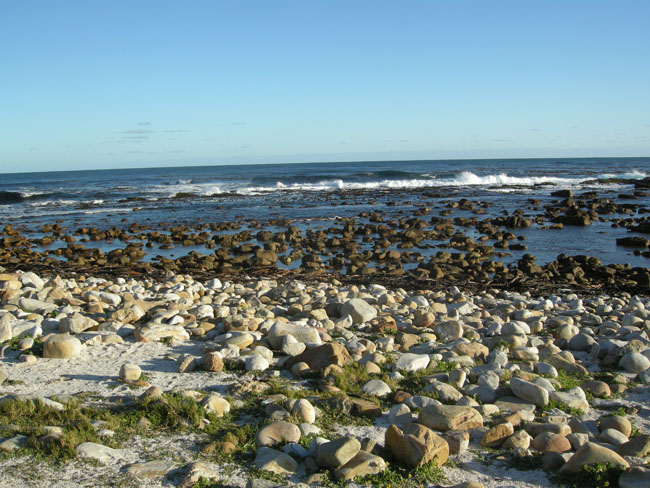 |
| This kelp has an inflated stipe area but not the full ball of our local Pacific Northwest Bull Kelp. |
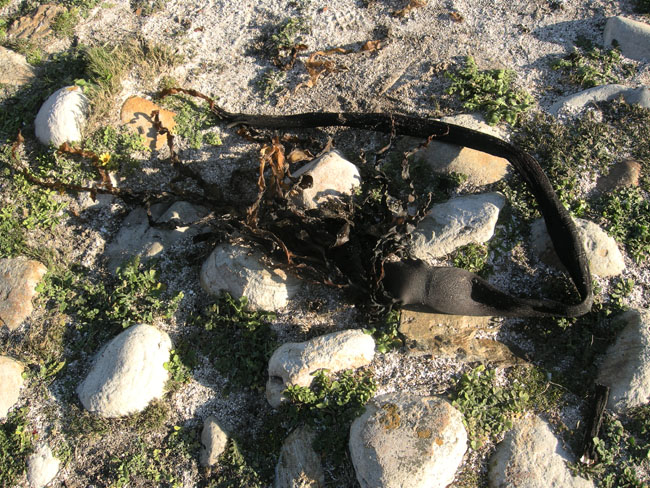 |
Our first African antelope!
(screech of brakes, snap snap snap of shutters...) |
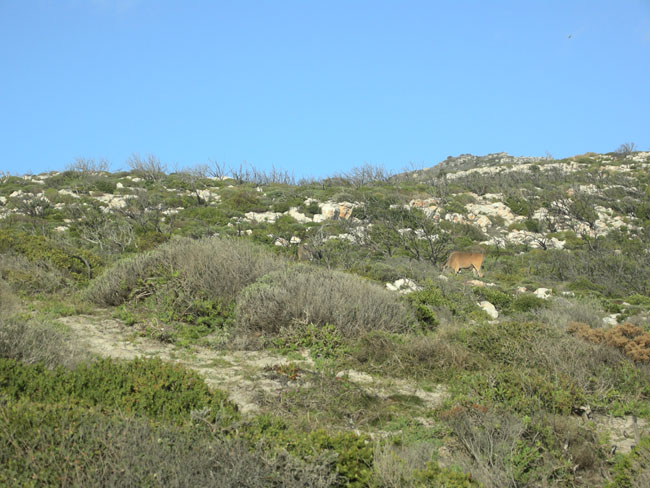 |
| And the first of many ostriches in the road |
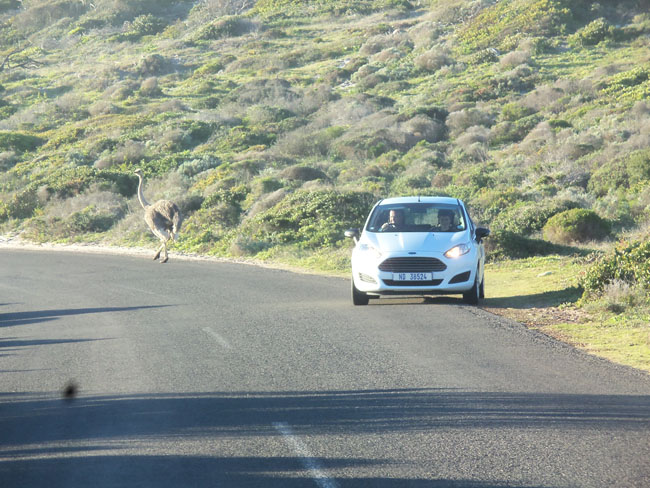 |
| and along the road. |
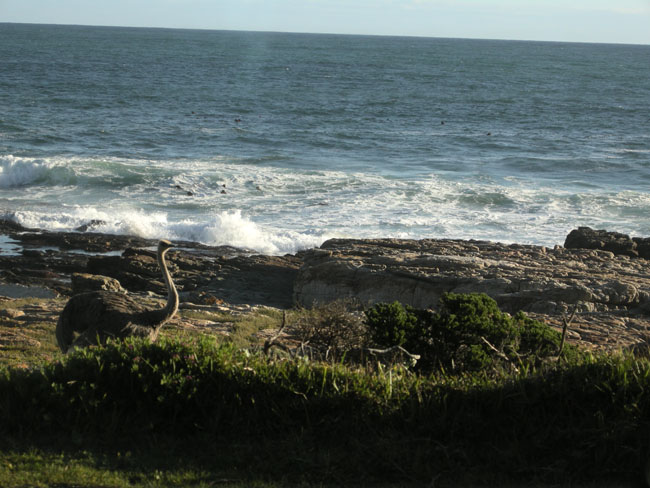 |
| The next day dawned bright and clear so we took the Table Mountain cable car. One guess as to how we paid for it... |
 |
| As the car rises, its floor spins one full turn during the 2300-foot ascent. This gives every passenger the full sweep of the view. I started the trip facing the mountain, and here, half-way up, we're facing north towards the harbor. Our brave little VW is the only red vehicle parked along the road to the right of the other cable car. |
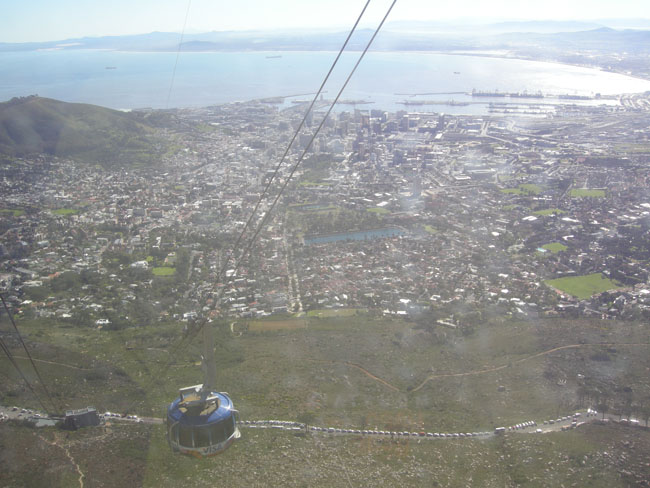 |
| At the 3500 foot summit plateau, there's a monument showing typical local wildflowers, the terrain and major highways of the area, with arrows and distances to cities of the world. |
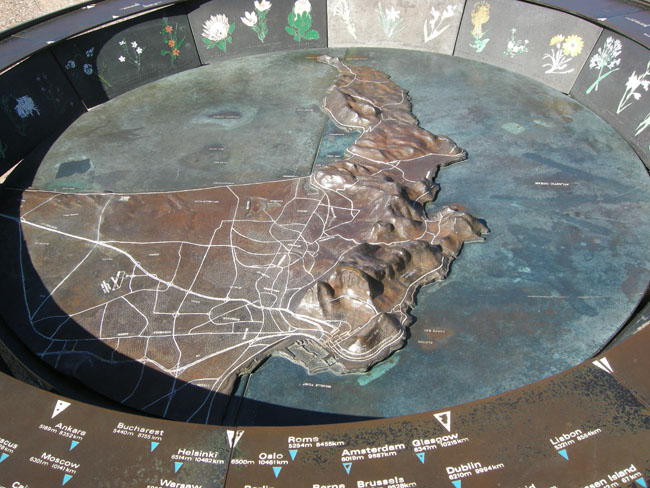 |
| Looking south, we could see all the way to the Cape of Good Hope where we had been the previous day |
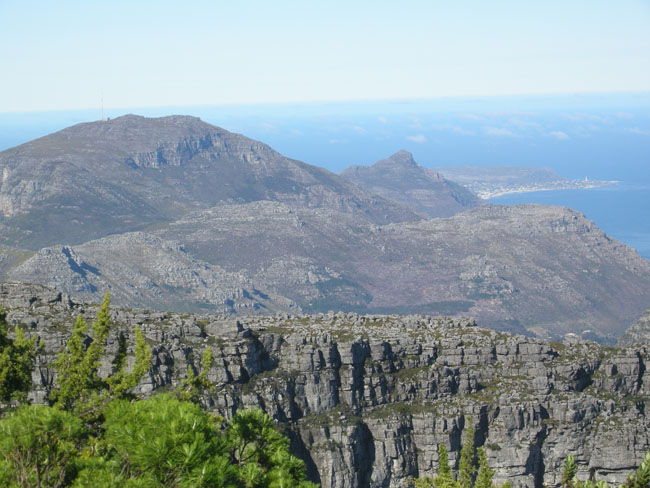 |
| Looking northeast to the Boland mountains, the southern end of the Cape Fold Belt range. Yes, that's fresh snow on the 6500 foot range. |
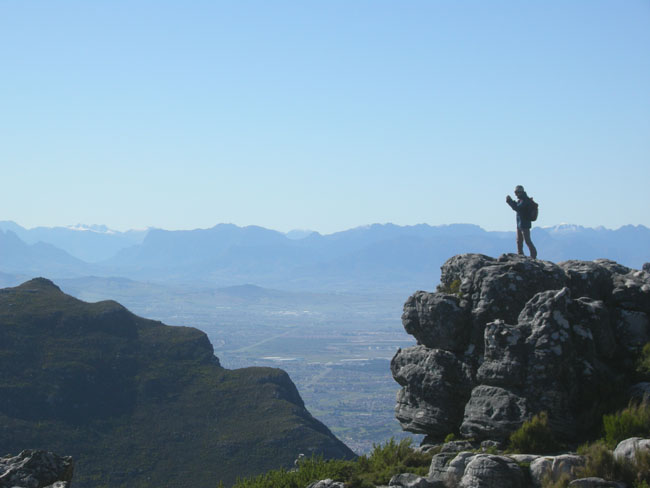 |
Looking north and down towards downtown Cape Town.
The next panorama shows all of Cape Town, with a red circle to mark our guest cottage. |
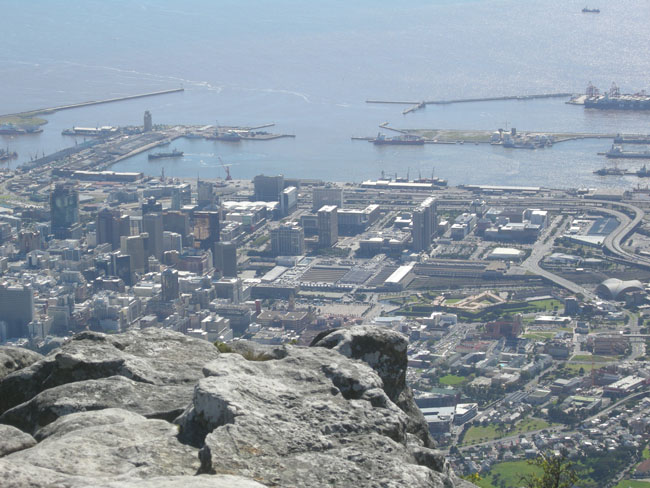 |
 |
Our final full day in Cape Town was dedicated to seeing the world-renowned Kirstenbosh Gardens. All of the plants in it are native to some part of South Africa.
The gardens are located "on the other (south) side" of Table Mountain from the city, and the garden map included the names of the various peaks forming the garden's northern boundary. |
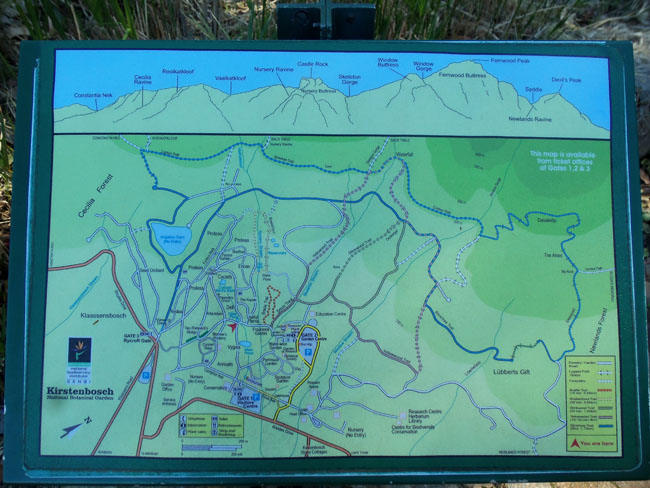 |
| We started with the compact but impressivly diverse greenhouse. This captive baobob was the only one we'd see on our trip since we didn't go far enough north. |
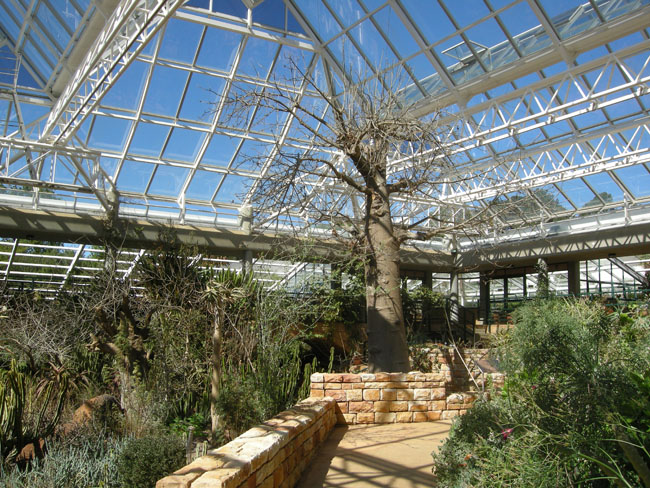 |
| Lots of succulents: many of the plants we think of as house plants are natives of South Africa |
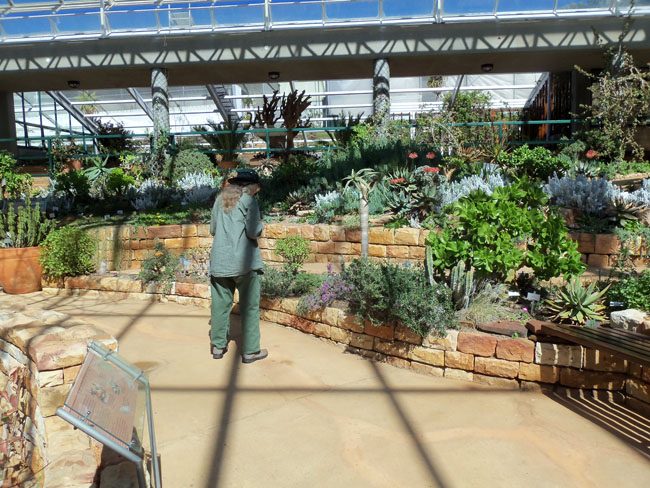 |
| The very strange welwitschia. A ground level "tree" with two leaves which keep growing its whole life. It has been on Karen's want-to-see list for a long time. They call it a tree because the 30 feet of it underground is more trunk-like tissue than root-like. |
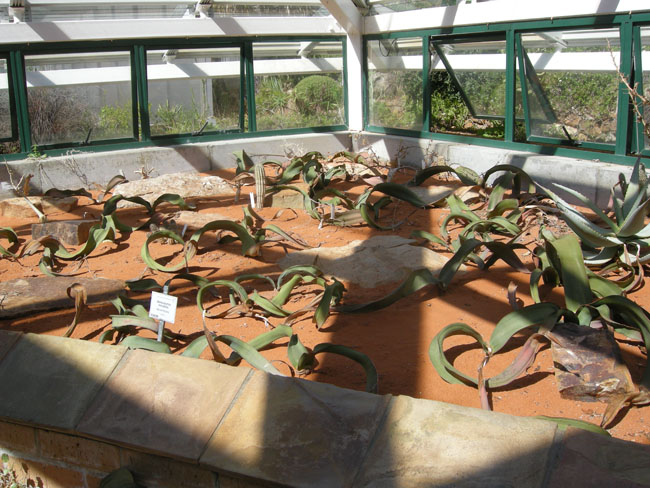 |
| The first of many Quiver trees, so named because the bushmen made quivers for their arrows out of them. |
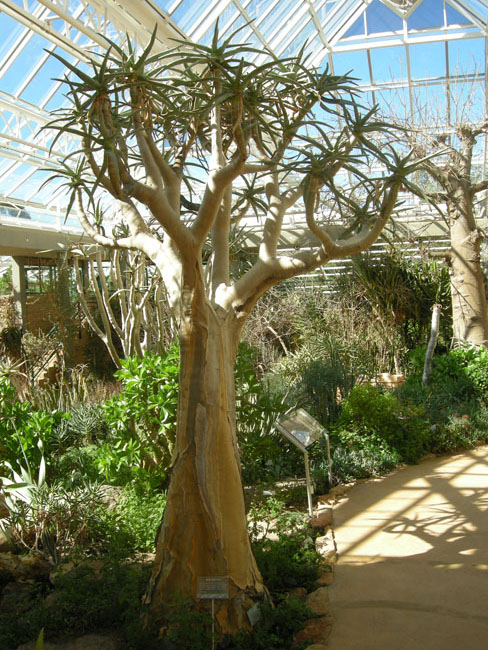 |
| Another houseplant at its unrestrained size |
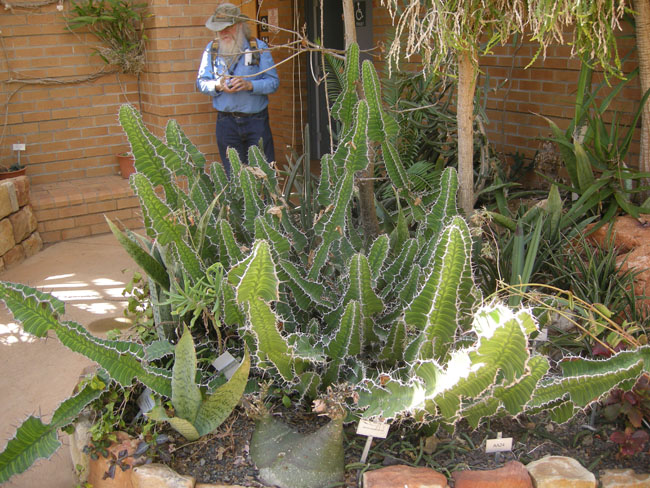 |
| And of course, Karen will photograph a tree fern whenever she can. |
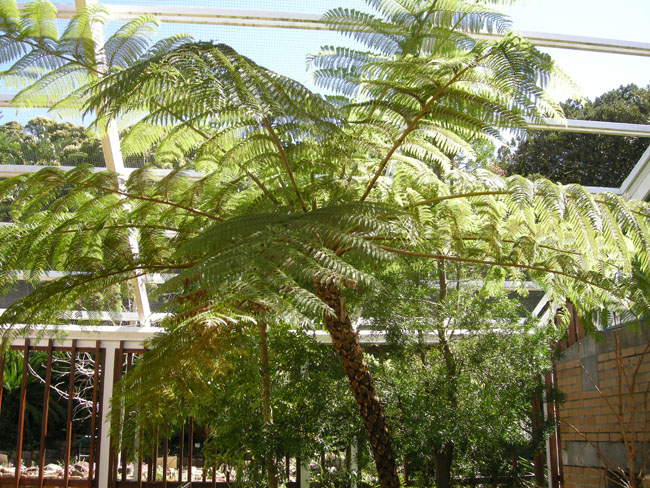 |
| Kirstenbosch Garden hugs the back skirts of Table Mountain |
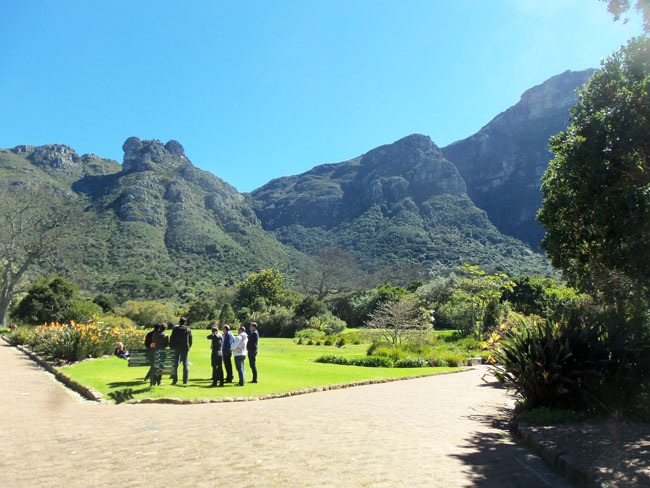 |
| Paths wind through fields of flowers, in this case daisies and geraniums |
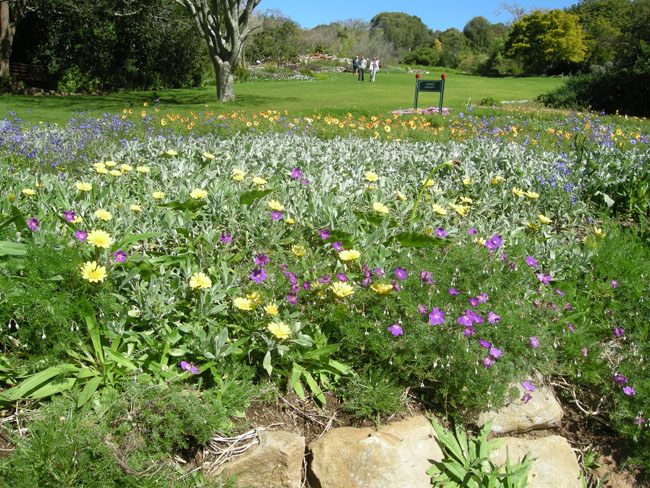 |
| Then there were the specimen plants. This white bird of paradise, a relative of banana trees, is much larger than the one in our atrium at home. |
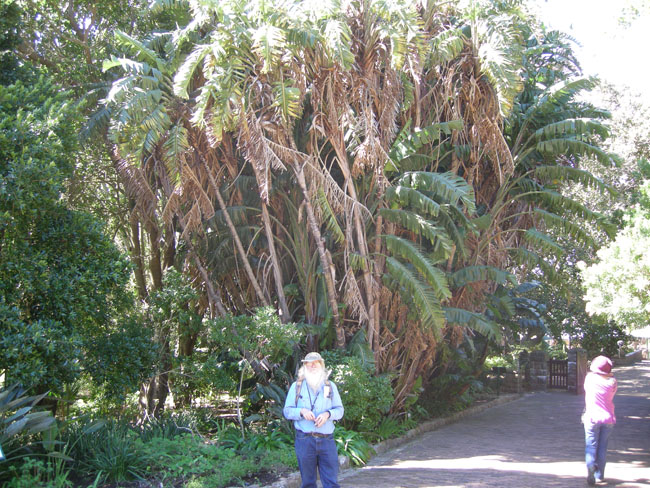 |
| We found this banana flower very impressive too. |
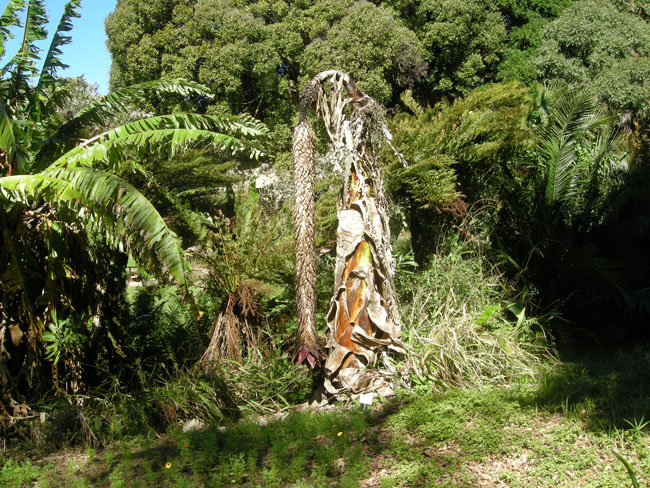 |
| This shows only a small part of the display of what was currently blooming in the garden -- many of these are proteas. |
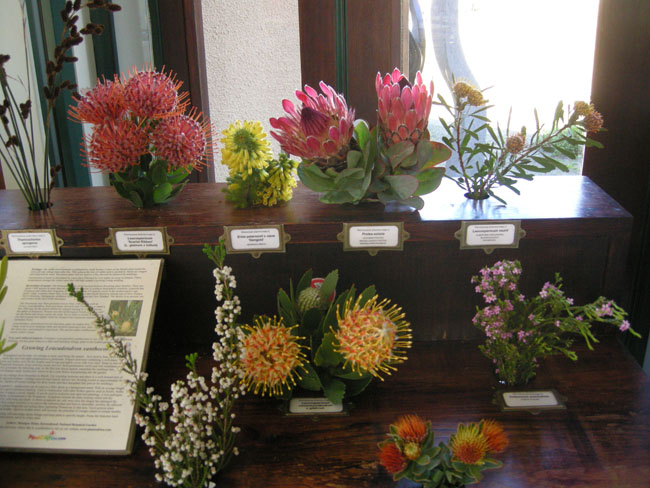 |
| Aloe -- another houseplant in the wild |
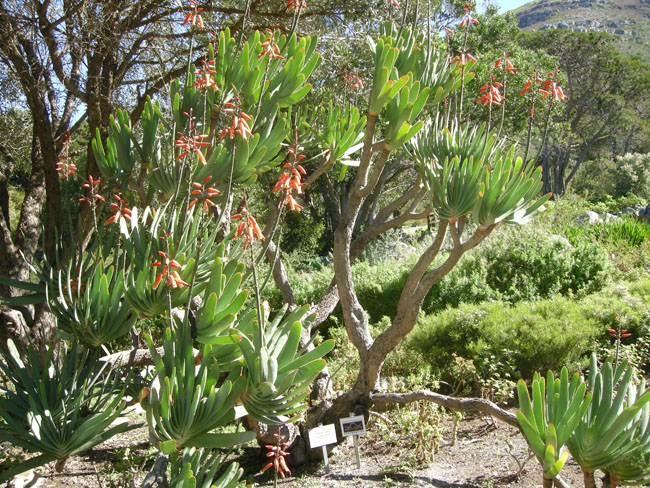 |
| Our first Egyptian goose. |
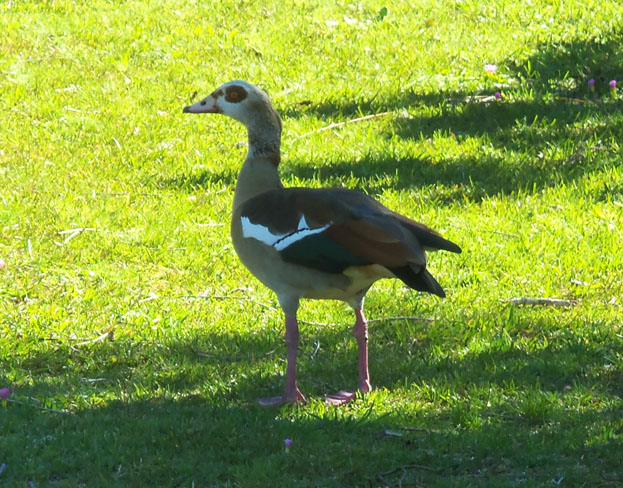 |
| And the vygies we would find growing all over. |
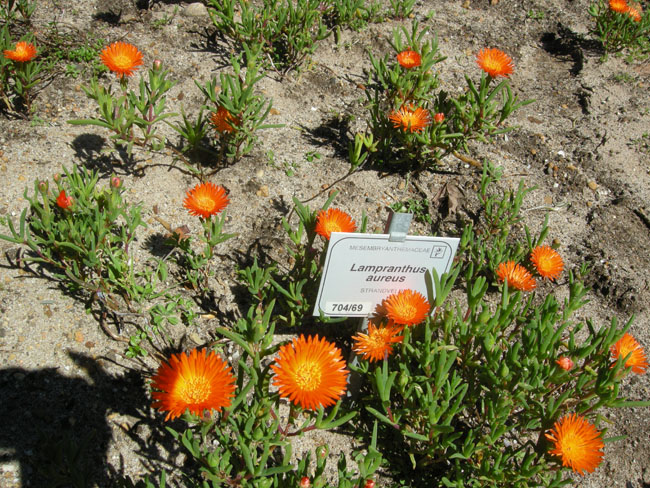 |
| They come in many bright colors. |
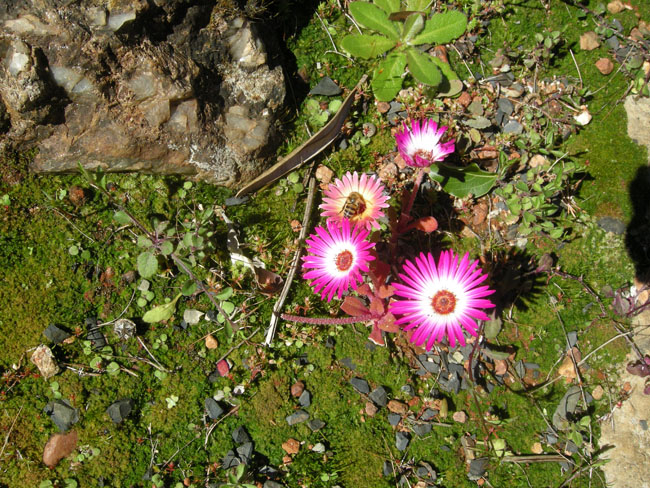 |
| More pincushion proteas |
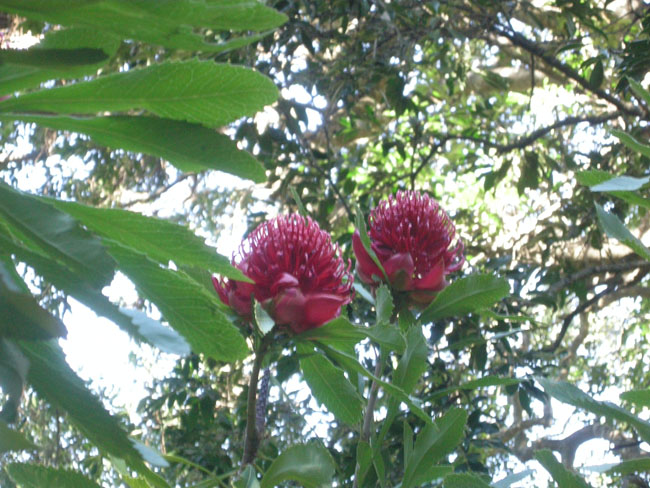 |
| And proteas of surprising delicacy |
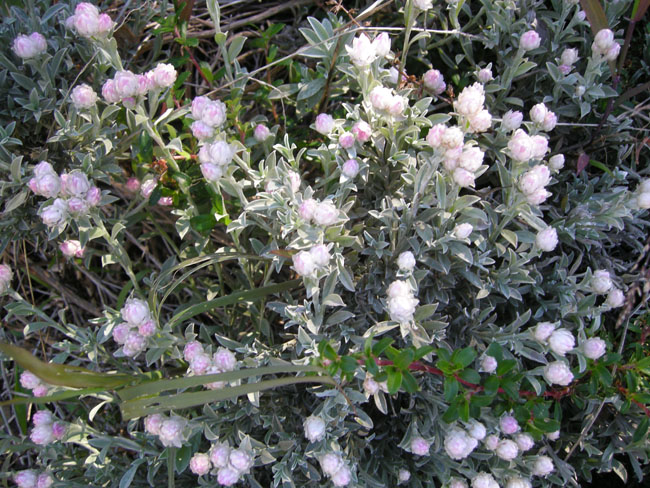 |
| And tiny size |
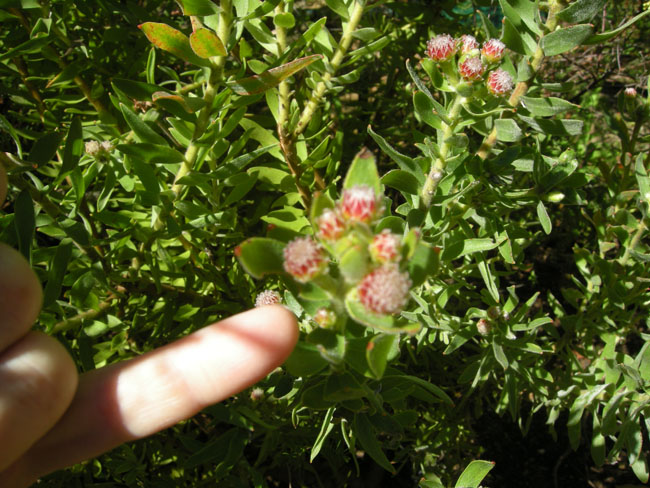 |
| And finally the largest: the King Protea. |
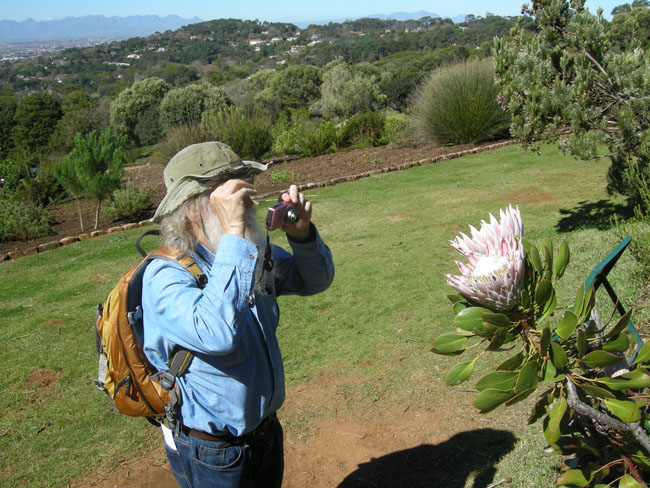 |
| Now we can leave town. |
 |




























































